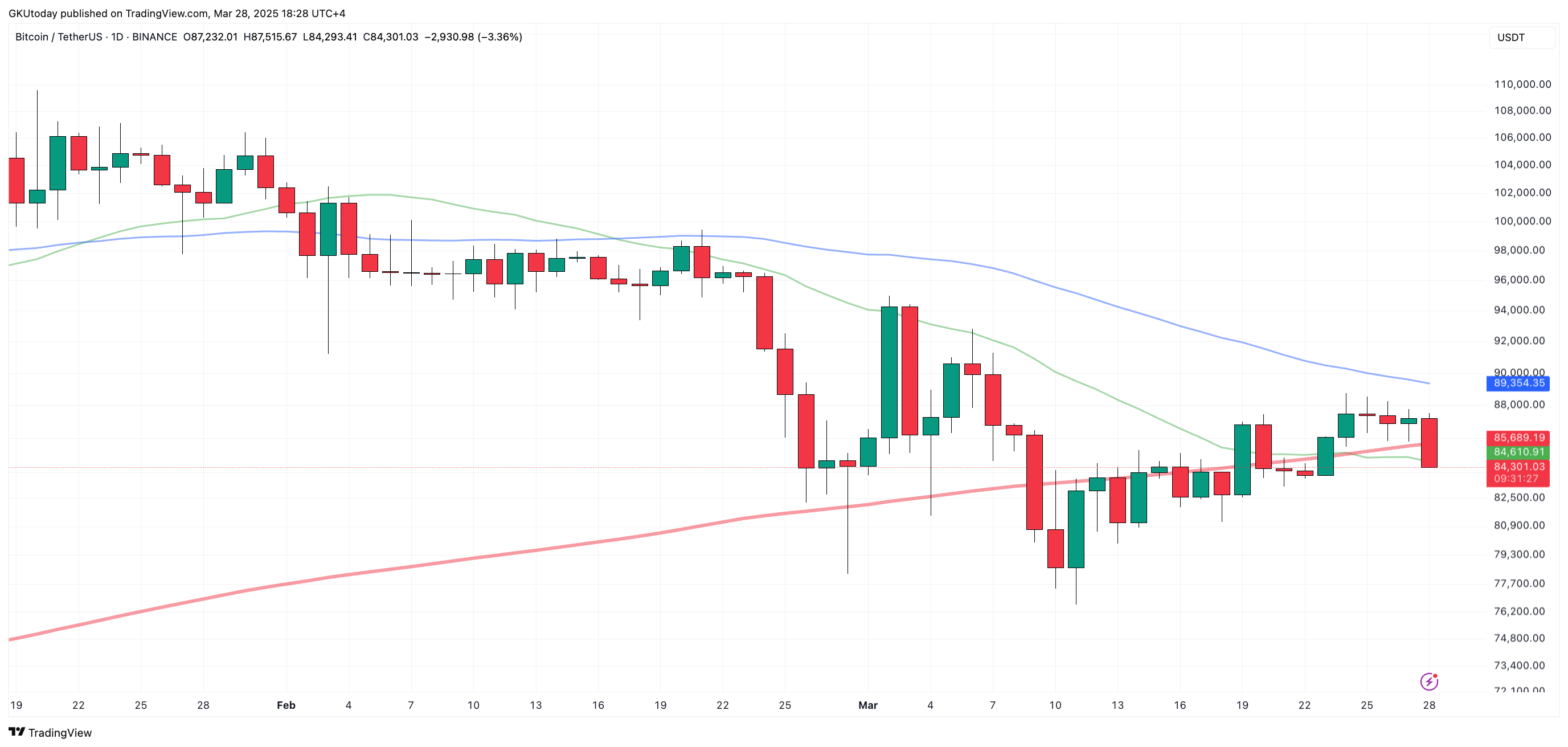Sometimes, it only takes one number to shift sentiment on the market, and this time, that number came from the latest inflation report. The price of Bitcoin has now lost a crucial technical support level - the 200-day moving average - after the latest Personal Consumption Expenditures (PCE) data was released, adding more weight to an already uncertain macroeconomic backdrop.
For Bitcoin, which tends to struggle in tight liquidity conditions, the break below the 200-day moving average could signal further downside if macro pressures persist.
What comes next? That depends on whether inflation actually slows or if markets have, once again, been too eager to price in victory too soon.

The February PCE index landed exactly where analysts had expected, at 2.5%, but the Core PCE, which strips out volatile food and energy costs, edged up to 2.8%, just above the forecasted 2.7%.
Is it over?
Just a month ago, optimism was running high, with many calling inflation a problem of the past, yet the data suggests otherwise.
For those keeping track, the Federal Reserve has made it clear time and again that PCE is the inflation metric that matters most. Unlike the Consumer Price Index (CPI), which tracks a fixed basket of goods, PCE adjusts based on what consumers are actually buying.
With inflation still holding above target levels and revisions hinting at even more persistence, expectations for a dovish shift from the Fed are fading. And Bitcoin (BTC) is suffering first.
 u.today
u.today